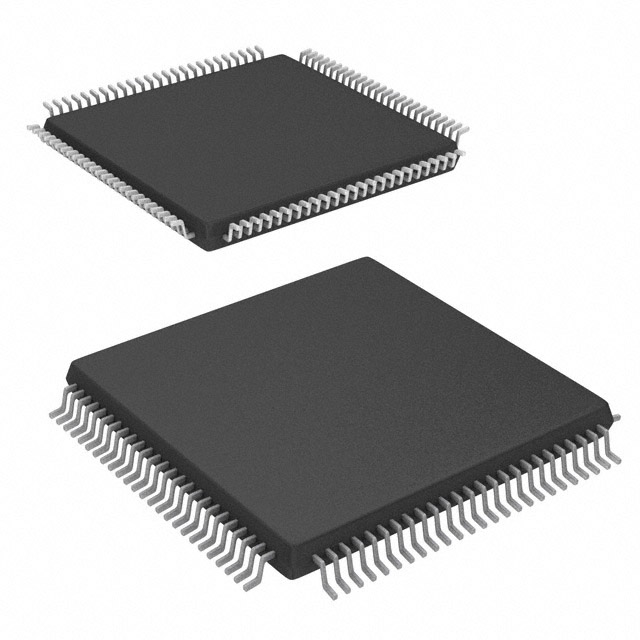




.png?x-oss-process=image/format,webp/resize,p_30)


XC2C128-6VQG100C Description
XC2C128-6VQG100C Description
The XC2C128-6VQG100C is a 128-macrocell Complex Programmable Logic Device (CPLD) from AMD's CoolRunner II series, housed in a 100-pin VQFP package. Designed for surface-mount applications, it operates within a 1.7V to 1.9V internal supply voltage range and delivers a maximum propagation delay of 5.7 ns, making it suitable for high-speed logic implementations. With 80 I/O pins and 8 logic blocks, it offers a balance of density and performance, supporting in-system programmability (ISP) for flexible design iterations.
XC2C128-6VQG100C Features
- High-Speed Performance: 5.7 ns tpd ensures rapid signal processing for timing-critical applications.
- Low-Power Operation: Optimized for 1.7V–1.9V internal supply, reducing power consumption in portable and battery-powered systems.
- 128 Macrocells & 3,000 Gates: Provides ample logic resources for medium-complexity designs.
- In-System Programmability (ISP): Enables field updates without physical removal, reducing downtime.
- 80 I/O Pins: Supports versatile interfacing with peripherals, sensors, or other logic devices.
- RoHS3 & REACH Compliant: Meets environmental and safety standards for global deployment.
- Industrial Temperature Range (0°C to 70°C): Reliable operation in commercial environments.
XC2C128-6VQG100C Applications
- Embedded Systems: Glue logic, bus bridging, and I/O expansion in microcontroller-based designs.
- Communications: Protocol conversion, signal conditioning, and interface management in networking hardware.
- Consumer Electronics: Control logic for displays, touchscreens, and power management circuits.
- Automotive: Sensor interfacing and low-latency signal processing in non-critical automotive subsystems.
- Industrial Automation: State machine control, PWM generation, and timing synchronization.
Conclusion of XC2C128-6VQG100C
The XC2C128-6VQG100C stands out for its low-power operation, high-speed performance, and in-system programmability, making it ideal for space-constrained, power-sensitive applications. While classified as Last Time Buy, its ROHS3 compliance and 128-macrocell density ensure relevance in legacy and new designs requiring reliable CPLD solutions. Engineers should evaluate alternative AMD CPLDs for future-proofing while leveraging this model for cost-effective, low-risk deployments.
Tech Specifications
XC2C128-6VQG100C Documents
Download datasheets and manufacturer documentation for XC2C128-6VQG100C
 Mult Dev LeadFrame Chg 29/Oct/2018
Mult Dev LeadFrame Chg 29/Oct/2018  XC2C128 Datasheet CoolRunner-II CPLD Family
XC2C128 Datasheet CoolRunner-II CPLD Family  Mult DEV EOL 01/Jan/2024
Mult DEV EOL 01/Jan/2024  Xilinx REACH211 Cert Xiliinx RoHS Cert
Xilinx REACH211 Cert Xiliinx RoHS Cert Relevant Search
Shopping Guide



















.png?x-oss-process=image/format,webp/resize,h_32)










